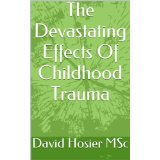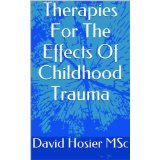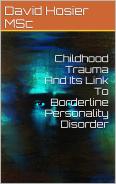Tags
Psychotherapeutic Interventions that Research Suggests are Helpful for Individuals Suffering with Borderline Personality Disorder (BPD).
A quick search of the internet reveals a very large range of therapies on offer which purport to treat BPD effectively. Indeed, the sheer range of putative treatments can seem confusing and overwhelming.
It is for this reason that I concentrate on just six treatments which research suggests are the most beneficial.
Let’s look at each of these in turn:
1) MENTALIZATION-BASED THERAPY (MBT).
My previous post on BPD referred to how people suffering from it have difficulties with how they are attached to (ie how they relate to) PRIMARY CARE GIVERS (eg parents). This can manifest itself in ATTACHMENT DISORDERS (which I also looked at in my last post) making other relationships they develop in adult life very difficult, volatile, complex, painful and distressing.
MBT seeks to help the person understand the roots of these difficulties and how their feelings and behaviours may be impacting on their relationships which in turn makes these relationships problematic.
Research shows that outcomes of MBT treatment have so far been very encouraging.
As well as reducing relationship problems, the therapy has also been found to lessen the likelihood of suicidal ideation ( thoughts and plans about suicide) and hospitalizations. Also, it has been shown to improve day-to-day functioning.
2) SCHEMA THERAPY.
Schemas are deeply entrenched beliefs relating to both oneself and the world in general. In people with BPD, these schema can be extremely negative (inaccurately so) and very unhelpful (or, to use a more technical term, MALADAPTIVE) to the individual who holds them.
Very often, they stem from a negative mindset which developed during the individual’s early life, due to, in no small part, childhood trauma. It is worth repeating that these negative schema can be very deeply ingrained and colour the individual’s entire outlook on life.
Schema therapy seeks to change these maladaptive schema into more adaptive (helpful) ones.
Treatment can be very lengthy, but there is strong evidence that it can significantly reduce symptoms of BPD.
Research into this type of treatment remains ongoing and I will report on any significant developments.
3) TRANSFERENCE-FOCUSED PSYCHOTHERAPY (TFP).
It is certainly worth first defining the psychotherapeutic idea of TRANSFERENCE:
it may be defined as: THE INAPPROPRIATE REPETITION IN THE PRESENT OF A RELATIONSHIP THAT WAS IMPORTANT TO THE PERSON’S CHILDHOOD.
For example, if our parents hurt, exploited or rejected us as children, in adult life we might feel that everyone we get to know will do the same, but without evidence that this will be the case (we are basing our view on a past relationship which is now not relevant).
The treatment aims to help individuals stop viewing present relationships in a rigid way determined by their painful past and show them that they could be misperceiving their present interactions with others ( including the therapist, as often individuals transfer the feelings they had for their parents as children -eg resentment- onto the therapist in the present).
Research, so far, has shown positive results and remains ongoing.
4) COGNITIVE THERAPY.
Cognitive therapy has long been known to be a very effective treatment for conditions such as anxiety and depression, and it is now being increasingly used to treat BPD. Studies of its effectiveness in relation to this have, so far, been encouraging.
One advantage of cognitive therapy is that it often leads to very significant improvements over quite short treatment periods. I myself underwent cognitive therapy and found it very beneficial.
Cognitive therapy focuses on correcting faulty, distorted, negative thinking styles relating to how we view ourselves, the world and the future. I write in more detail about cognitive therapy in the EFFECTS OF CHILDHOOD TRAUMA category of my blog.
5) DIALECTIC BEHAVIOUR THERAPY (DBT).
The studies on this therapy have , so far, given mixed results. It has been shown, though, in several pieces of research, to reduce the likelihood of suicide attempts in the individual undergoing treatment (the risk of suicide in people suffering from BPD without treatment is high).
Also, after a year of treatment, individuals report a more general improvement in their condition, but, unfortunately, often are still left with significant levels of distress. More studies are required, and, indeed, are being conducted to see if longer treatment periods yield better outcomes. I will report on any significant developments in this area.
DBT draws on psychotherapy, group therapy, meditation, elements of Buddhism and cognitive-behaviour therapy. More research needs to be conducted on the therapy to discover which of its varied components are the most effective in treating BPD. Again, I will report on significant developments.
6) MEDICATION.
Whilst there is, at the moment, no obvious, single medication to treat the whole range of BPD symptoms equally effectively, there are, nevertheless, established medications which can help with some of the symptoms the BPD sufferer might experience, such as anxiety and depression. This is, though, of course, the province of GPs and psychiatrists.
Above eBooks now available on Amazon for immediate download. $4.99 each. CLICK HERE.
Best wishes, David Hosier BSc Hons; MSc; PGDE(FAHE).







